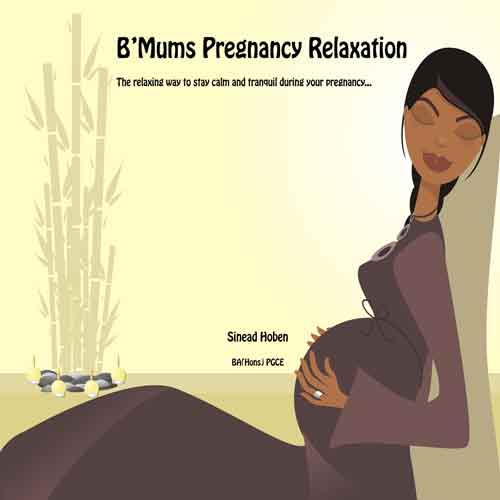Is My Baby Getting Enough Milk?
Breastfeeding mothers frequently ask how to know their babies are getting enough milk. The breast is not the bottle, and it is not possible to hold the breast up to the light to see how many ounces or millilitres of milk the baby drank. Our number obsessed society makes it difficult for some mothers to accept not seeing exactly how much milk the baby receives.
However, there are ways of knowing that the baby is getting enough. In the long run, weight gain is the best indication whether the baby is getting enough, but rules about weight gain appropriate for bottle fed babies may not be appropriate for breastfed babies.
Ways of Knowing
1. Baby's nursing is characteristic. A baby who is obtaining good amounts of milk at the breast sucks in a very characteristic way. When a baby is getting milk (he is not getting milk just because he has the breast in his mouth and is making sucking movements), you will see a pause at the point of his chin after he opens to the maximum and before he closes his mouth, so that one suck is (open mouth wide--> pause-->close mouth). If you wish to demonstrate this to yourself, put your index or other finger in your mouth and suck as if you were sucking on a straw. As you draw in, your chin drops and stays down as long as you are drawing in. When you stop drawing in, your chin comes back up. This same pause that is visible at the baby's chin represents a mouthful of milk when the baby does it at the breast. The longerthe pause, the more the baby got. Once you know about the pause you can cut through so much of the nonsense breastfeeding mothers are being told—like feed the baby twenty minutes on each side. A baby who does this type of sucking (with the pauses) for twenty minutes straight might not even take the second side. A baby who nibbles (doesn't drink) for 20 hours will come off the breast hungry. The website http://www.drjacknewman.com has videos that show this pause in the baby’s chin.
2. Baby's bowel movements. For the first few days after delivery, the baby passes meconium, a dark green, almost black, substance. Meconium accumulates in the baby's gut during pregnancy. It is passed during the first few days, and by the third day, the bowel movements start becoming lighter, as more breastmilk is taken. Usually by the fifth day, the bowel movements have taken on the appearance of the normal breastmilk stool. The normal breastmilk stool is pasty to watery, mustard coloured, and usually has little odour. However, bowel movements may vary considerably from this description. They may be green or orange, may contain curds or mucus, or may resemble shaving cream in consistency (from air bubbles). The variations in colour do not mean something is wrong. A baby who is breastfeeding only, and is starting to have bowel movements that are becoming lighter by day 3 of life, is doing well.
Without becoming obsessive about it, monitoring the frequency and quantity of bowel motions is one of the best ways, next to observing the baby’s drinking, (see above, and videos at http://www.drjacknewman.com) of knowing if the baby is getting enough milk. After the first three to four days, the baby should have increasing bowel movements so that by the end of the first week he should be passing at least two to three substantial yellow stools each day. In addition, many infants have a stained diaper with almost each feeding. A baby who is still passing meconium on the fourth or fifth day of life, should be seen at the clinic the same day. A baby who is passing only brown bowel movements is probably not getting enough, but this is not very reliable.
Some breastfed babies, after the first three to four weeks of life, may suddenly change their stool pattern from many each day, to one every three days or even less. Some babies have gone as long as 15 days or more without a bowel movement. As long as the baby is otherwise well, and the stool is the usual pasty or soft, yellow movement, this is not constipation and is of no concern. No treatment is necessary or desirable, because no treatment is necessary or desirable for something that is normal.
Any baby between five and 21 days of age who does not pass at least one substantial bowel movement within a 24 hour period should be seen at the breastfeeding clinic the same day. Generally, small, infrequent bowel movements during this time period mean insufficient intake. There are definitely some exceptions and everything may be fine, but it is better to check.
3. Urination. With six soaking wet (not just wet) diapers in a 24 hours hour period, after about 4-5 days of life, you can be reasonably sure that the baby is getting a lot of milk (if he is breastfeeding only). Unfortunately, the new super dry "disposable" diapers often do indeed feel dry even when full of urine, but when soaked with urine they are heavy. It should be obvious that this indication of milk intake does not apply if you are giving the baby extra water (which, in any case, is unnecessary for breastfed babies, and if given by bottle, may interfere with breastfeeding). The baby's urine should be almost colourless after the first few days, though occasional darker urine is not of concern.
During the first two to three days of life, some babies pass pink or red urine. This is not a reason to panic and does not mean the baby is dehydrated. No one knows what it means, or even if it is abnormal. It is undoubtedly associated with the lesser intake of the breastfed baby compared with the bottle fed baby during this time, but the bottle feeding baby is not the standard on which to judge breastfeeding. However, the appearance of this colour urine should result in attention to getting the baby well latched on and making sure the baby is drinking at the breast. During the first few days of life, only if the baby is well latched on can he get his mother's milk. Giving water by bottle or cup or finger feeding at this point does not fix the problem. It only gets the baby out of hospital with urine that is not red. Fixing the latch and using compression will usually fix the problem (See Handout B: Protocol to Increase Breastmilk Intake by the Baby). If relatching and breast compression do not result in better intake, there are ways of giving extra fluid without giving a bottle directly (Handout 5: Using a Lactation Aid 2005). Limiting the duration or frequency of feedings can also contribute to decreased intake of milk.
The following are NOT good ways of judging
Your breasts do not feel full. After the first few days or weeks, it is usual for most mothers not to feel full. Your body adjusts to your baby's requirements. This change may occur quite suddenly. Some mothers breastfeeding perfectly well never feel engorged or full.
The baby sleeps through the night. Not necessarily. A baby who is sleeping
through the night at 10 days of age, for example, may, in fact, not be getting
enough milk. A baby who is too sleepy and has to be awakened for feeds or
who is "too good" may not be getting enough milk. There are many
exceptions, but get help quickly.
The baby cries after feeding. Although the baby may cry after feeding because
of hunger, there are also many other reasons for crying. See also Handout
2: Colic
in the Breastfed Baby. Do not limit feeding times. “Finish”
the first side before offering the other.
The baby feeds often and/or for a long time. For one mother feeding every three hours or so may be often; for another, three hours or so may be a long period between feeds. For one, a feeding that lasts for 30 minutes is a long feeding; for another, it is a short one. There are no rules how often or for how long a baby should nurse. It is not true that the baby gets 90% of the feed in the first 10 minutes. Let the baby determine his own feeding schedule and things usually come right, if the baby is suckling and drinking at the breast and having at least two to three substantial yellow bowel movements each day. Remember, a baby may be on the breast for two hours, but if he is actually feeding or drinking (open wide—pause—close mouth type of sucking) for only two minutes, he will come off the breast hungry. If the baby falls asleep quickly at the breast, you can compress the breast to continue the flow of milk (Handout 15: Breast Compression). Contact the breastfeeding clinic with any concerns, but wait to start supplementing. If supplementation is truly necessary, there are ways of supplementing which do not use an artificial nipple (Handout 5: Using a Lactation Aid 2005).
"I can express only half an ounce of milk". This means nothing and should not influence you. Therefore, you should not pump your breasts "just to know". Most mothers have plenty of milk. The problem usually is that the baby is not getting the milk that is available, either because he is latched on poorly, or the suckle is ineffective or both. These problems can often be fixed easily.
The baby will take a bottle after feeding. This does not necessarily mean that the baby is still hungry. This is not a good test, as bottles may interfere with breastfeeding.
The five week old is suddenly pulling away from the breast but still seems hungry. This does not mean your milk has "dried up" or decreased. During the first few weeks of life, babies often fall asleep at the breast when the flow of milk slows down even if they have not had their fill. When they are older (four to six weeks of age), they no longer are content to fall asleep, but rather start to pull away or get upset. The milk supply has not changed; the baby has. Compress the breast (Handout 15: Breast Compression) to increase flow.
Notes on Scales and Weights
1. Scales are all different. We have documented significant differences from one scale to another. Weights have often been written down wrong. A soaked cloth diaper may weigh 250 grams (half a pound) or more, so babies should be weighed naked or with a brand new dry diaper.
2. Many rules about weight gain are taken from observations of growth of formula feeding babies. They do not necessarily apply to breastfeeding babies. A slow start may be compensated for later, by fixing the breastfeeding. Growth charts are guidelines only.
Questions? (416) 813-5757 (option 3) or drjacknewman@sympatico.ca
or my book Dr. Jack Newman’s Guide to Breastfeeding ( called The
Ultimate Breastfeeding Book Of Answers
in the USA.)
Handout #4. Is My Baby Getting Enough?Revised January 2005
Written by Jack Newman, MD, FRCPC. © 2005
This handout may be copied and distributed without further permission, on the condition that it is not used in any context in which the WHO code on the marketing of breastmilk substitutes is violated.




